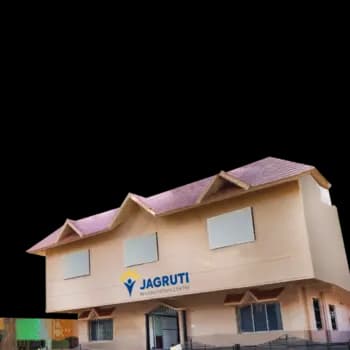Acupuncture Therapy
What is acupuncture?
Acupuncture is a procedure that involves inserting needles into the skin of a patient at certain specific points. Rooted in traditional Chinese medicine, acupuncture has proven to balance the flow of energy through various pathways. Practitioners insert needles at various points to stimulate nerves, muscles, and various connective tissues. The procedure aims to enhance the body’s natural painkillers and promote healing.
Does acupuncture hurt?
No. Acupuncture is a predominantly painless and non-invasive procedure. Patients might feel a slight sting when a needle is inserted; however, it lasts only a second or two.
What does acupuncture treat?
Acupuncture mainly relieves discomfort associated with health conditions and diseases. Here is when patients are recommended to opt for the procedure to improve their condition:
- Commonly recommended to manage chemotherapy-induced and post-operative problems like nausea, vomiting, and dental pain, to name a few.
- Helps alleviate various kinds of headaches like migraines and tension headaches.
- Pain in other body parts like the lower back, neck, and abdomen post-delivery can be treated effectively.
- Pain can be relieved in patients suffering from various health problems like osteoarthritis, menstrual cramps, and respiratory issues like allergic rhinitis.
- Psychological disorders like stress, anxiety, and depression can be controlled with the help of acupuncture. This therapy has proven to be effective in managing stress and curbing the presence of negative thoughts effectively.
Are there different types of acupuncture?
Yes. Here are 8 different types of acupuncture:
1. Shamanic acupuncture focuses on harmonising physical, emotional, and spiritual energies.
2. Ancient Chinese acupuncture uses meridians and qi flow to treat ailments and restore balance.
3. 5-Element Acupuncture uses the 5 main elements of nature (earth, wood, fire, metal, and water) to align physical, emotional, and spiritual aspects.
4. Stems and Branches Acupuncture aligns treatment with cosmic influences and the patient’s constitution.
5. Dr. Tan-type acupuncture uses balancing methods for immediate pain relief. The technique targets interconnected meridians instead of local points of discomfort.
6. Master Tung-style Acupuncture uses minimal needle insertions to ease pain and emphasises distal points.
7. Japanese acupuncture is a precise technique that includes shallow needle insertions and touch-based diagnosis for a smooth flow of energy.
8. Vietnamese acupuncture focuses on ear acupuncture to treat various health conditions.
9. Microsystems of acupuncture target small parts of the body like the ear, hand, or scalp to treat diverse conditions.
10. Marma Puncture is a combination of acupuncture and Ayurveda that ensures a smooth flow of energy and holistic healing.
11. Dry Needling Acupuncture releases muscle tension through various trigger points and improves mobility.
How does acupuncture work?
Acupuncture practitioners believe that the life force, also called qi, flows through the body. According to traditional Chinese medicine, free-flowing Qi suggests good health, and blockages result in pain and illness.
Acupuncture aims to restore and reboot balance by inserting needles into specific points along energy pathways called meridians. Stimulating these points unblocks qi and helps a body to regain its inherent harmony.
What happens during an acupuncture treatment?
Acupuncture points are located throughout the body, and these points can be distant from each other. Acupuncture patients inform the patient about various points of needle placement and orient them about the procedure.
The three main steps of the acupuncture procedure are:
1. Needle Insertion
Depending on the health problem, needles are inserted into various strategic points of the body. There is minimal discomfort, and patients generally do not feel the insertion at all. However, if the needle has to penetrate deep into a body part, patients might feel a sting.
2. Needle Manipulation
The treatment involves applying mild heat or giving electrical impulses to enhance the treatment. However, acupuncture practitioners might move or twirl the needles for more efficiency in the treatment.
3. Needle Removal
The number of needles inserted generally ranges between five and twenty. The duration of each session is fifteen to twenty minutes. Once the session is over, needles are removed gently, and the procedure is mostly painless.
What happens after an acupuncture treatment?
1. Short-Term Reactions
Reactions of patients vary once the acupuncture treatment is over. While some people feel relaxed and relieved of the pain, others feel more energised. Patients suffering from aches and pains have felt better.
Those suffering from bowel disorders experienced detox symptoms like excessive urination in the first few hours. At certain times, patients also feel emotionally vulnerable and end up crying for hours without any reason.
2. Long-Term Reactions
As the body strengthens its immunity after a session, symptoms like runny nose and fatigue might get triggered. This is also a part of expelling any underlying issues that could be worsening the health.
These are simply signs of healing and reflect the body’s ability to restore energy and balance. Patients could feel physically exhausted but gain immense mental clarity.
What are the benefits of acupuncture?
- Acupuncture has proven to treat multiple psychological disorders like stress, anxiety, and depression.
- Acupuncture is a painless procedure, and the duration of the session lasts not more than one hour.
- From periodic menstrual cramps to lower back aches and neck pains, acupuncture has proven to be an effective treatment plan.
- Acupuncture has also proved to improve sleep, control allergic asthma, and enhance the working of the digestive system.
What are the risks or complications of acupuncture?
Acupuncture is a generally safe procedure performed by certified medical practitioners. Needles should be sterile and meant for single use to minimise the risk of infections. The side effects of the procedure are minimal, which include soreness, bleeding, and bruising but can be managed. However, pregnant women and patients with pacemakers or any other metal inserted in the body must avoid the procedure.







